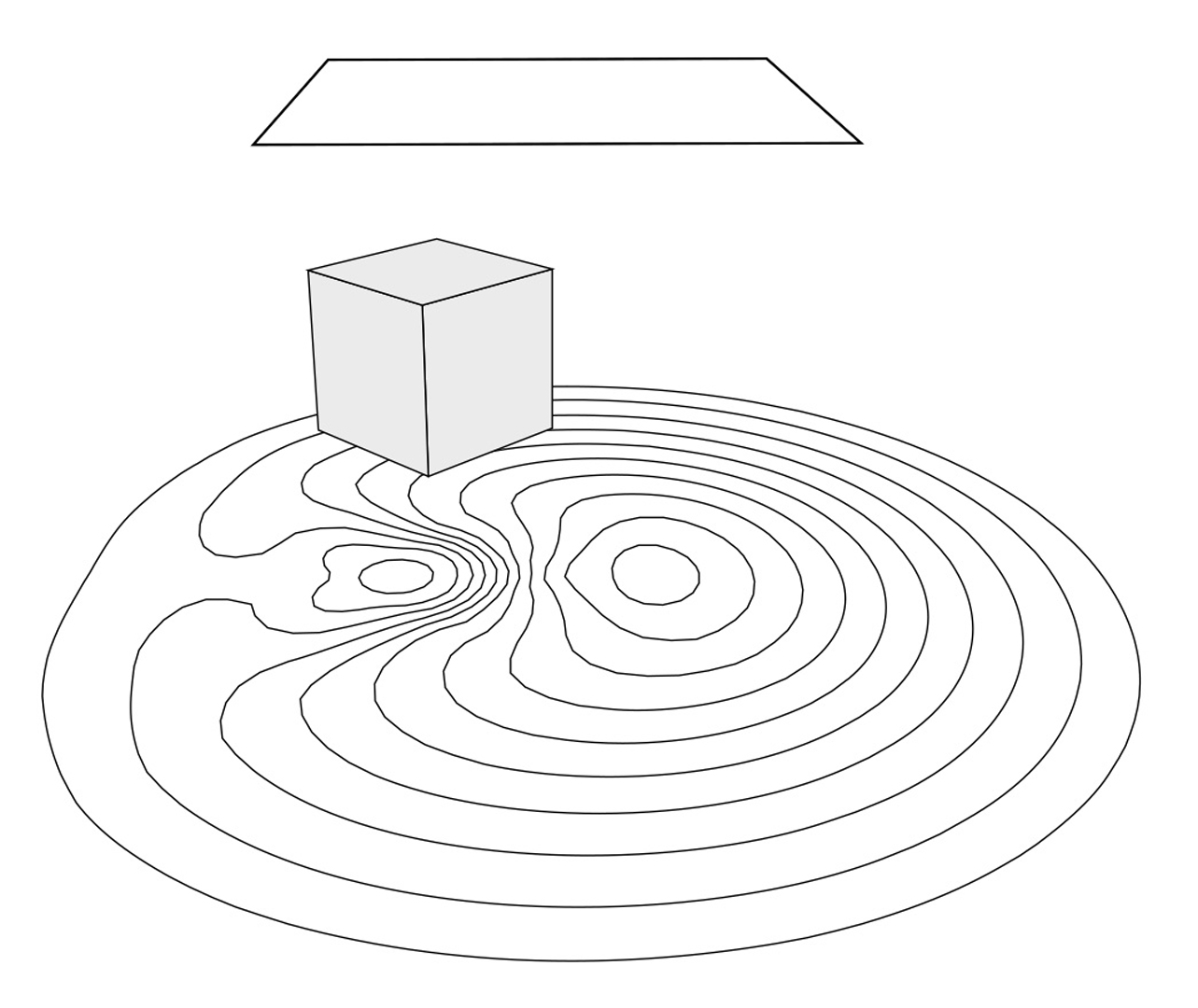“The irradiance Jacobian for partially occluded polyhedral sources” by Arvo
Conference:
Type(s):
Title:
- The irradiance Jacobian for partially occluded polyhedral sources
Presenter(s)/Author(s):
Abstract:
The irradiance at a point on a surface due to a polyhedral source of uniform brightness is given by a well-known analytic formula. In this paper we derive the corresponding analytic expression for the irradiance Jacobian, the derivative of the vector representation of irradiance. Although the result is elementary for unoccluded sources, within penumbrae the irradiance Jacobian must incorporate more information about blockers than either the irradiance or vector irradiance. The expression presented here holds for any number of polyhedral blockers and requires only a minor extension of standard polygon clipping to evaluate. To illustrate its use, three related applications are briefing described: direct computation of isolux contours, finding local irradiance extrema, and iso-meshing. Isolux contours are curves of constant irradiance across a surface that can be followed using a predictor-corrector method based on the irradiance Jacobian. Similarly, local extrema can be found using a descent method. Finally, iso-meshing is a new approach to surface mesh generation that incorporates families of isolux contours.
References:
1. ACTON,F.S. Numerical Methods that Work. Harper & Row, New York, 1970.
2. BAUM, D. R., RUSHMEIER, H. E., AND WINGET, J. M. Improving radiosity solutions through the use of analytically determined form-factors. Computer Graphics 23, 3 (July 1989), 325-334.
3. BERGER,M.Geometry, Volume II. Springer-Verlag, New York, 1987. Translated by M. Cole and S. Levy.
4. CONWAY, D. M., AND COTTINGHAM, M. S. The isoluminance con-tour model. In Proceedings of Ausgraph ’88 (Melbourne, Australia, September 1988), pp. 43-50.
5. DRETTAKIS, G., AND FIUME, E. L. Concrete computation of global il-lumination using structured sampling. In Proceedings of the Third Eu-rographics Workshop on Rendering, Bristol, United Kingdom (1992).
6. FOK, V. A. The illumination from surfaces of arbitrary shape. Trans-actions of the Optical Institute, Leningrad 28 (1924), 1-11. (Russian).
7. GERSHUN, A. The light field. Journal of Mathematics and Physics 18, 2 (May 1939), 51-151. Translated by P. Moon and G. Timoshenko.
8. HECKBERT,P.S.Simulating Global Illumination Using Adaptive Mesh-ing. PhD thesis, University of California, Berkeley, June 1991.
9. HOPF,E. Mathematical Problems of Radiative Equilibrium. Cam-bridge University Press, New York, 1934.
10. LIFSHITZ,L.M.,AND PIZER, S. M. A multiresolution hierarchical approach to image segmentation based on intensity extrema. IEEE Transactions on Pattern Analysis and MachineIntelligence 12, 6 (June 1990), 529-540.
11. LISCHINSKI, D., SMITS, B., AND GREENBERG, D. P. Bounds and error estimates for radiosity. In Computer Graphics Proceedings (1994), Annual Conference Series, ACM SIGGRAPH.
12. LISCHINSKI, D., TAMPIERI,F.,AND GREENBERG, D. P. Discontinuity meshing for accurate radiosity. IEEE Computer Graphics and Appli-cations 12, 6 (November 1992), 25-39.
13. LISCHINSKI, D., TAMPIERI,F.,AND GREENBERG, D. P. Combining hi-erarchical radiosity and discontinuity meshing. In Computer Graphics Proceedings (1993), Annual Conference Series, ACM SIGGRAPH, pp. 199-208.
14. NISHITA,T.,AND NAKAMAE, E. Half-tone representation of 3-D objects illuminated by area sources or polyhedron sources. In Proceedings of the IEEE Computer Software and Applications Conference (Chicago, November 1983), pp. 237-242.
15. NISHITA,T.,AND NAKAMAE, E. Continuous tone representation of 3-D objects taking account of shadows and interreflection. Computer Graphics 19, 3 (July 1985), 23-30.
16. PLANTINGA, H., AND DYER, C. R. Visibility, occlusion, and the aspect graph. International Journal of Computer Vision 5, 2 (1990), 137-160.
17. PREISENDORFER,R.W. Hydrologic Optics, Volume II. Foundations. National Oceanic & Atmospheric Administration, Honolulu, Hawaii, 1976. (Available as NTIS PB-259 794).
18. SCHR~ ODER,P.,AND HANRAHAN, P. On the form factor between two polygons. In Computer Graphics Proceedings (1993), Annual Con-ference Series, ACMSIGGRAPH, pp. 163-164.
19. TELLER, S. Computing the antipenumbra of an area light source. Computer Graphics 26, 2 (July 1992), 139-148.
20. TROTTER,A.P.Illumination: Its Distribution and Measurement. The Macmillan Company, London, 1911.
21. VERBECK,C.P.,AND GREENBERG, D. P. A comprehensive light-source description for computer graphics. IEEE Computer Graphics and Applications 4, 7 (July 1984), 66-75.
22. WARD, G. J., AND HECKBERT, P. S. Irradiance gradients. In Proceedings of the Third Eurographics Workshop on Rendering, Bristol, United Kingdom (May 1992).
23. WEILER, K., AND ATHERTON, P. Hidden surface removal using polygon area sorting. Computer Graphics 11, 3 (1977), 214-222.




